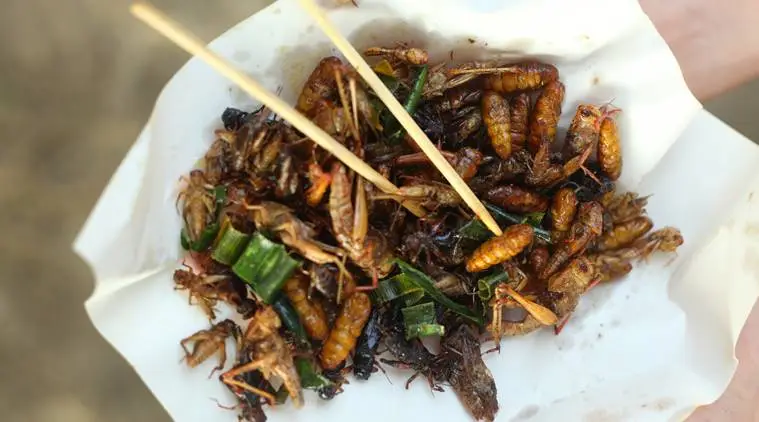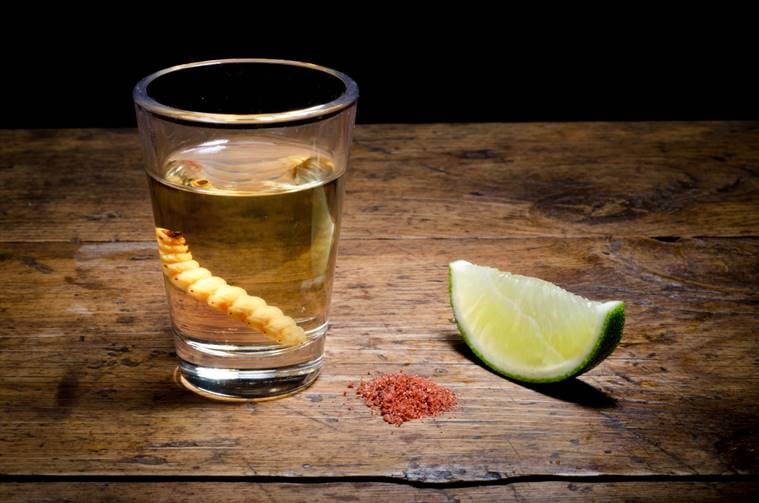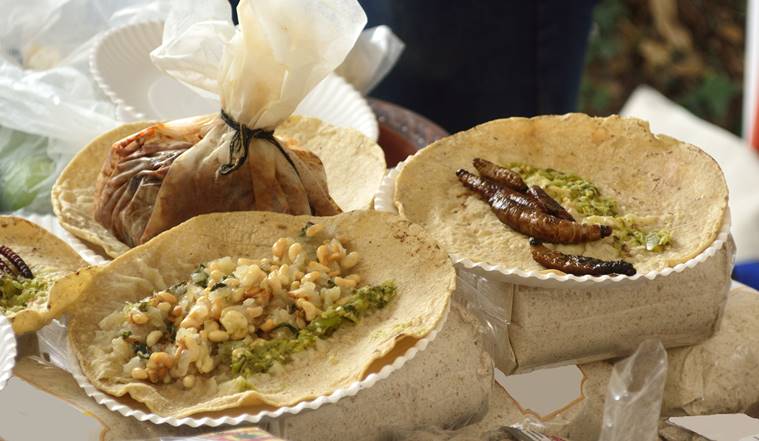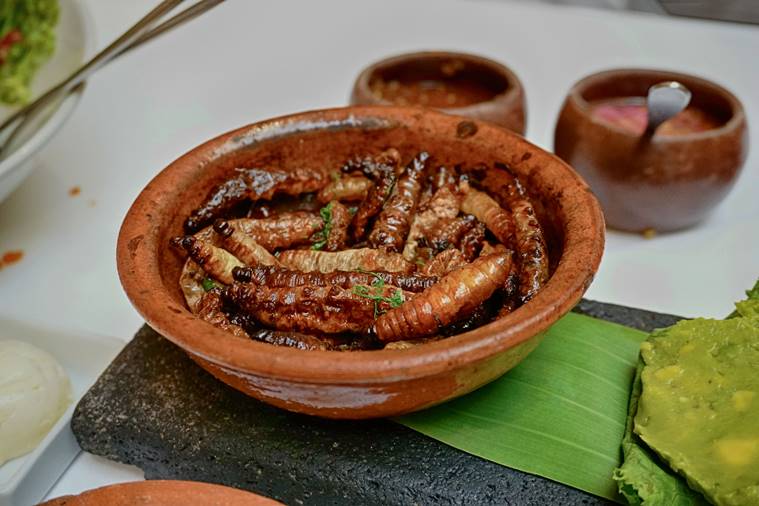 Though insects and worms can make most people cringe, they can also serve as a great source of nutrition. (Source: Getty Images/ Thinkstock)
Though insects and worms can make most people cringe, they can also serve as a great source of nutrition. (Source: Getty Images/ Thinkstock)
Red agave worm or the Tequila worm as it is popularly known in Mexico tastes spicy when bitten into and thus, is often used as a pizza topping in the country. Interestingly, it is also used in tequila shots as it gives a boost to the flavour of alcohol.
Stinkbugs, on the other hand, leave the aftertaste of an apple and a bite of a tree worm reminds one of pork rind.
Similarly, in India, the eggs of red ants that taste like egg yolk are consumed by indigenous tribes of North East along with the crunchy Leta or the larva of silkworms. The Bodo tribe of Assam considers this a delicacy, and it is a staple in their diet. Members of these tribes also consume caterpillars, termites, grasshoppers, crickets and beetles.
 Tequila worm is used in tequila shots as it gives a boost to the flavour of alcohol. (Source: Getty Images/ Thinkstock)
Tequila worm is used in tequila shots as it gives a boost to the flavour of alcohol. (Source: Getty Images/ Thinkstock)
“The history of insect-eating dates back to very old times in the country,” says Arup Kumar Hazarika, a professor at Cotton College in Guwahati, who has concluded a study on the insect diet of the Bodo tribe of Assam. “It’s quite common among North East tribal communities and southern parts like Kerala, Karnataka, Tamil Nadu. Also, parts of Rajasthan and Himachal Pradesh have been eating them in their diet as well,” he adds.
 Farming insects are not just good for meeting the nutritional needs but also benefits the planet. (Source: Getty Images/ Thinkstock)
Farming insects are not just good for meeting the nutritional needs but also benefits the planet. (Source: Getty Images/ Thinkstock)
Highly nutritious
Basically, bugs are a rich source of fibre and protein and as per the UN Food and Agriculture Organisation, they are great for human and planetary health. “Insect bodies are rich in protein and thus can be used as a substitute for protein. They also contain certain micro and macronutrients that are not found in other meats,” explains Hazarika.
In Central India, people meet their protein needs by consuming ants and crickets. They make a chutney by pounding ants, chilli, garlic and ginger. However, the idea of entomophagy (use of insects as food by humans) is still not widely embraced and the taboo associated with an insect diet stops people from partaking of this nutritious food.
 Bugs are a rich source of fibre and protein. (Source: Getty Images/ Thinkstock)
Bugs are a rich source of fibre and protein. (Source: Getty Images/ Thinkstock)
“Insect diets have a calorie content of 110-150 mg and give you micronutrients that are good for your body. They are not too high in complex carbohydrates either,” says Dr Priyanka Rohatgi, chief nutritionist, Indraprastha Apollo Hospitals.
Will it ever be a part of our regular diet?
“The trend is expected to grow in the coming years. Currently, I am working on processing insect bodies into a powder form that can be used as a source of protein,” says Hazarika. Since there is no mixing of chemicals, the powder will be completely organic.
To introduce people to an insect diet, research institutes across the country have been trying to disguise the food in the form of powder or pickle so it goes a little easier down the uninitiated palate.
The Central Sericultural Research and Training Institute of Mysore has been experimenting with converting leftover silkworm pupae into food. The formulae were made in sweet and salty preservations and sent to the North East for feedback. They have also tried a spicy pickle of the pupae to lure more people.
Insect diet can address global hunger
Not just enhancing culinary flavours, insects can also address the problem of global hunger. They are raised by individuals and insect farms simply consist of a container with a lid, with a bit of water and feed. They are cheap to maintain and take up little space. They make the perfect, healthy, low-cost protein meals for families.
Fun facts
Mexico serves spicy grasshoppers (chapulin) tacos, while dragonflies boiled in coconut milk are a must try delicacy in Indonesia. In South Africa, termites are served with maize porridge. In Kenya, termites are drummed out of their mounds — a sound that tricks them into believing that it’s raining. They are then eaten alive or dry-roasted.